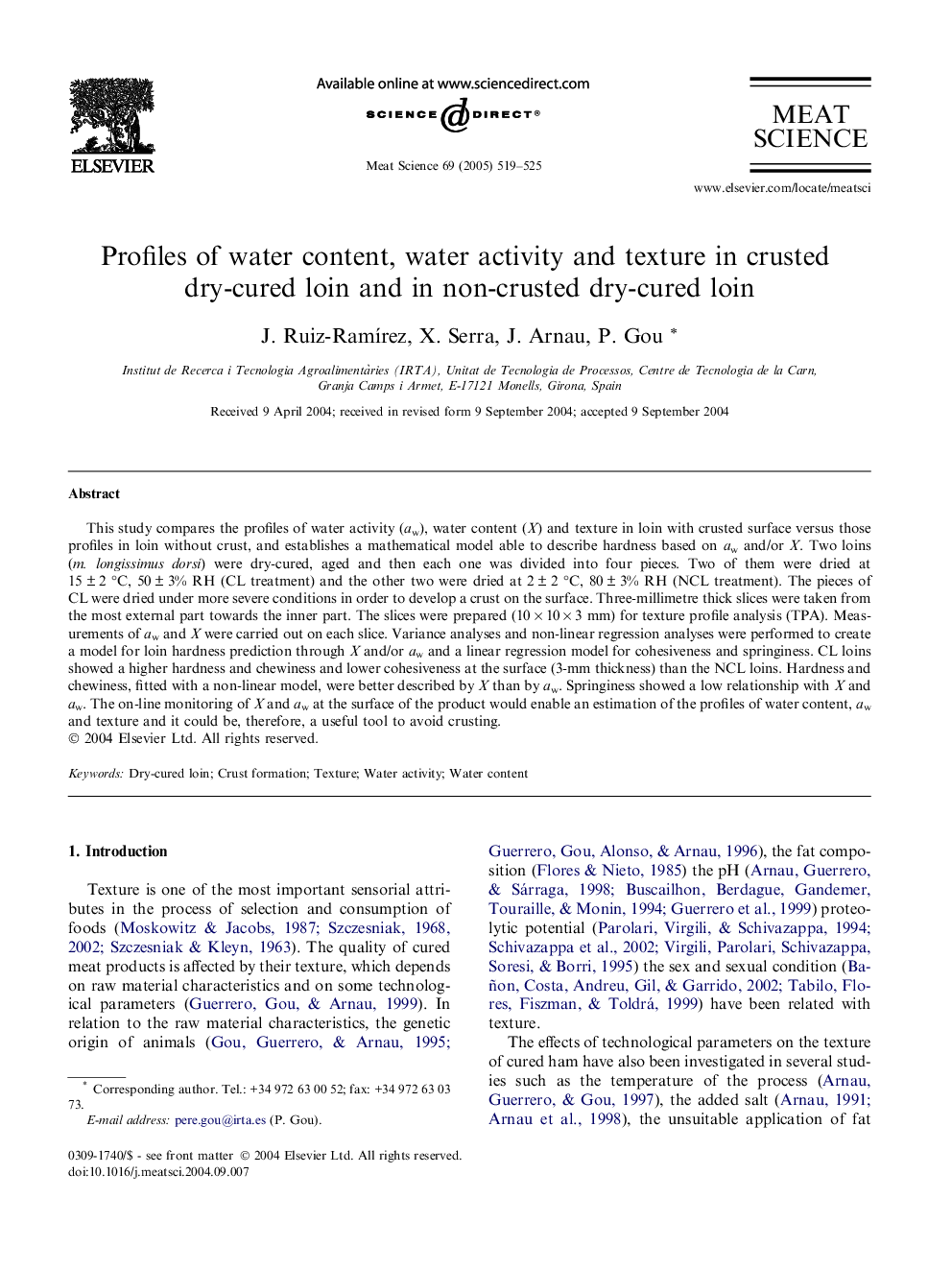| Article ID | Journal | Published Year | Pages | File Type |
|---|---|---|---|---|
| 8983906 | Meat Science | 2005 | 7 Pages |
Abstract
This study compares the profiles of water activity (aw), water content (X) and texture in loin with crusted surface versus those profiles in loin without crust, and establishes a mathematical model able to describe hardness based on aw and/or X. Two loins (m. longissimus dorsi) were dry-cured, aged and then each one was divided into four pieces. Two of them were dried at 15 ± 2 °C, 50 ± 3% RH (CL treatment) and the other two were dried at 2 ± 2 °C, 80 ± 3% RH (NCL treatment). The pieces of CL were dried under more severe conditions in order to develop a crust on the surface. Three-millimetre thick slices were taken from the most external part towards the inner part. The slices were prepared (10 Ã 10 Ã 3 mm) for texture profile analysis (TPA). Measurements of aw and X were carried out on each slice. Variance analyses and non-linear regression analyses were performed to create a model for loin hardness prediction through X and/or aw and a linear regression model for cohesiveness and springiness. CL loins showed a higher hardness and chewiness and lower cohesiveness at the surface (3-mm thickness) than the NCL loins. Hardness and chewiness, fitted with a non-linear model, were better described by X than by aw. Springiness showed a low relationship with X and aw. The on-line monitoring of X and aw at the surface of the product would enable an estimation of the profiles of water content, aw and texture and it could be, therefore, a useful tool to avoid crusting.
Related Topics
Life Sciences
Agricultural and Biological Sciences
Food Science
Authors
J. Ruiz-RamÃrez, X. Serra, J. Arnau, P. Gou,
